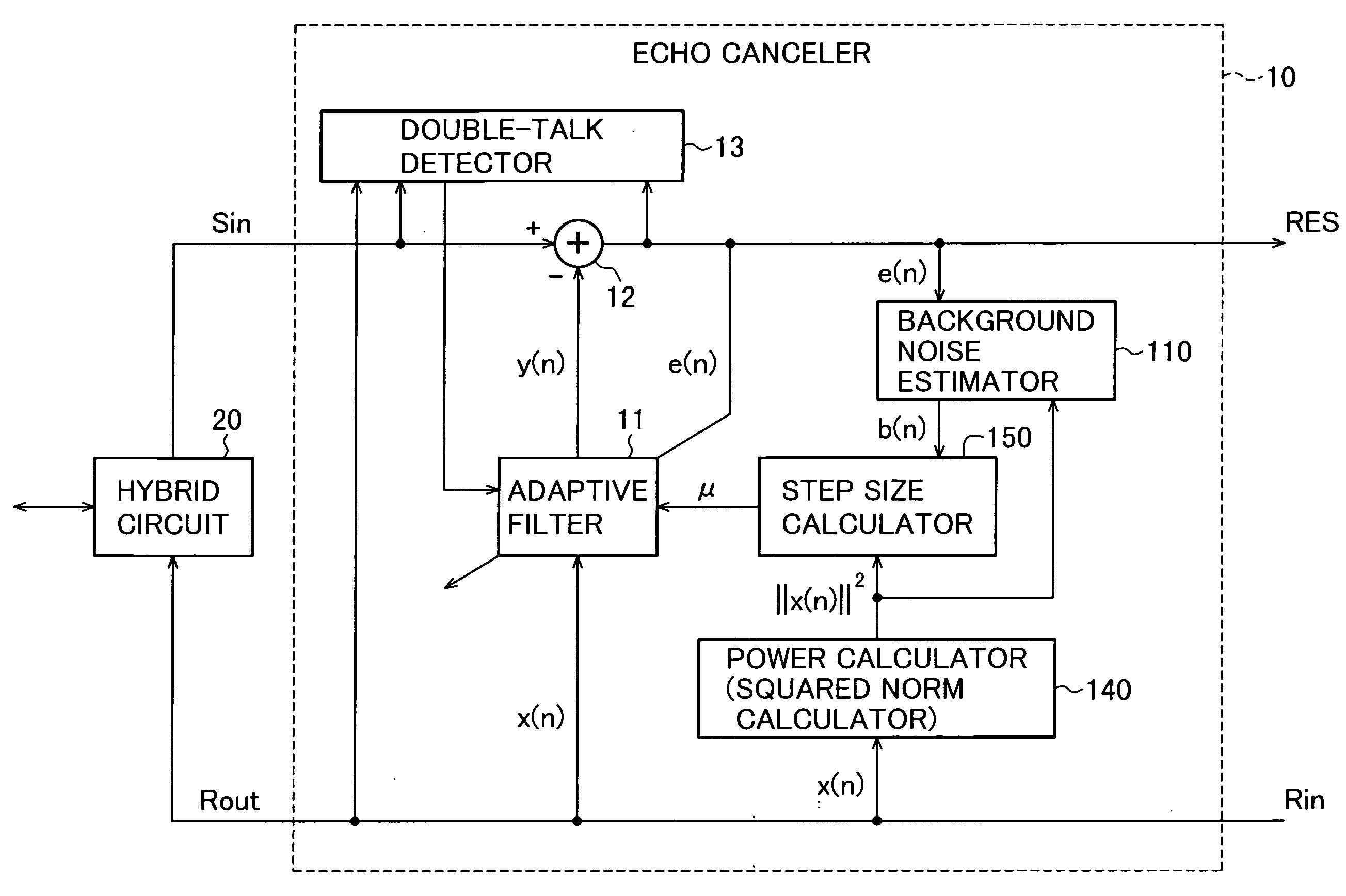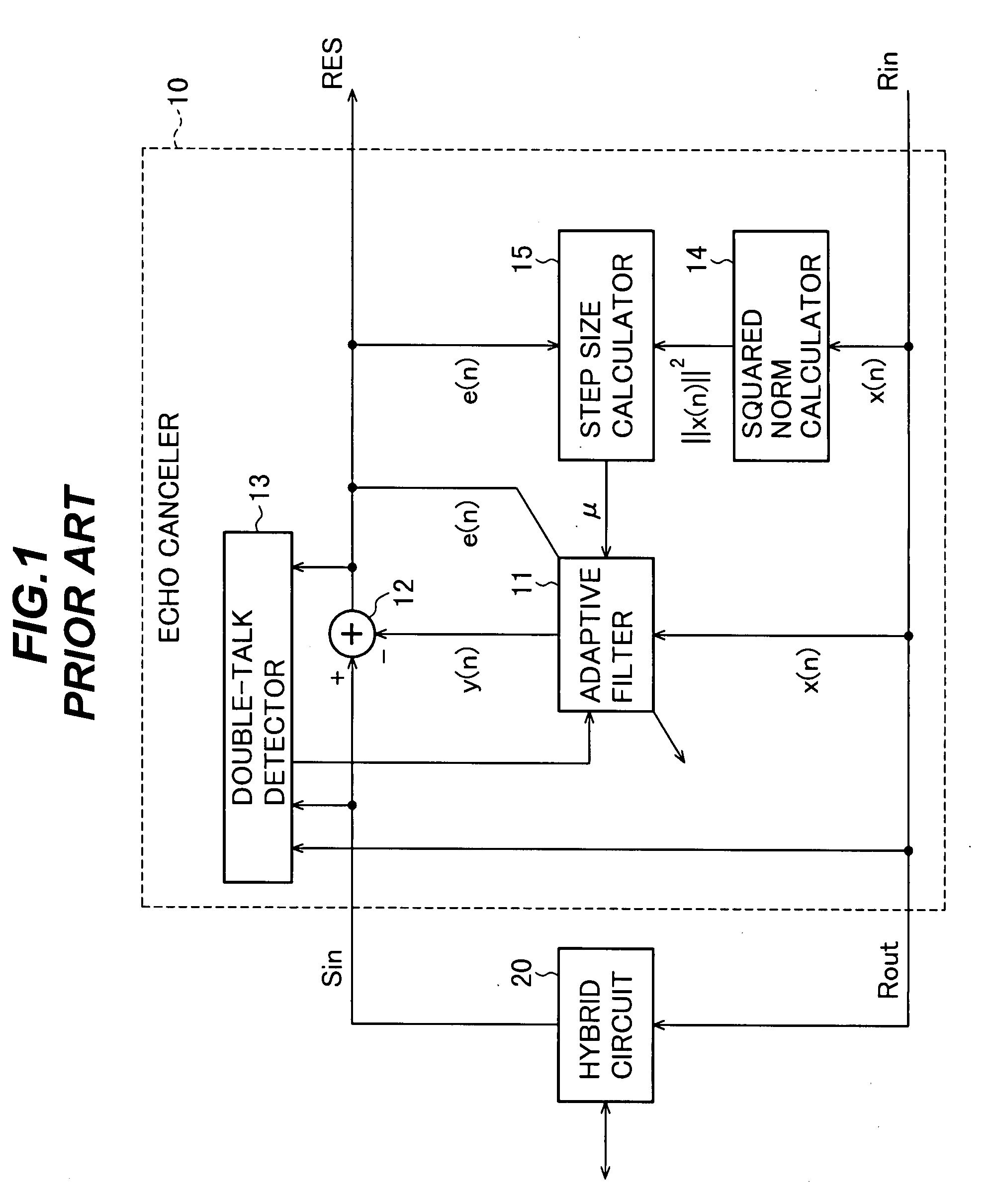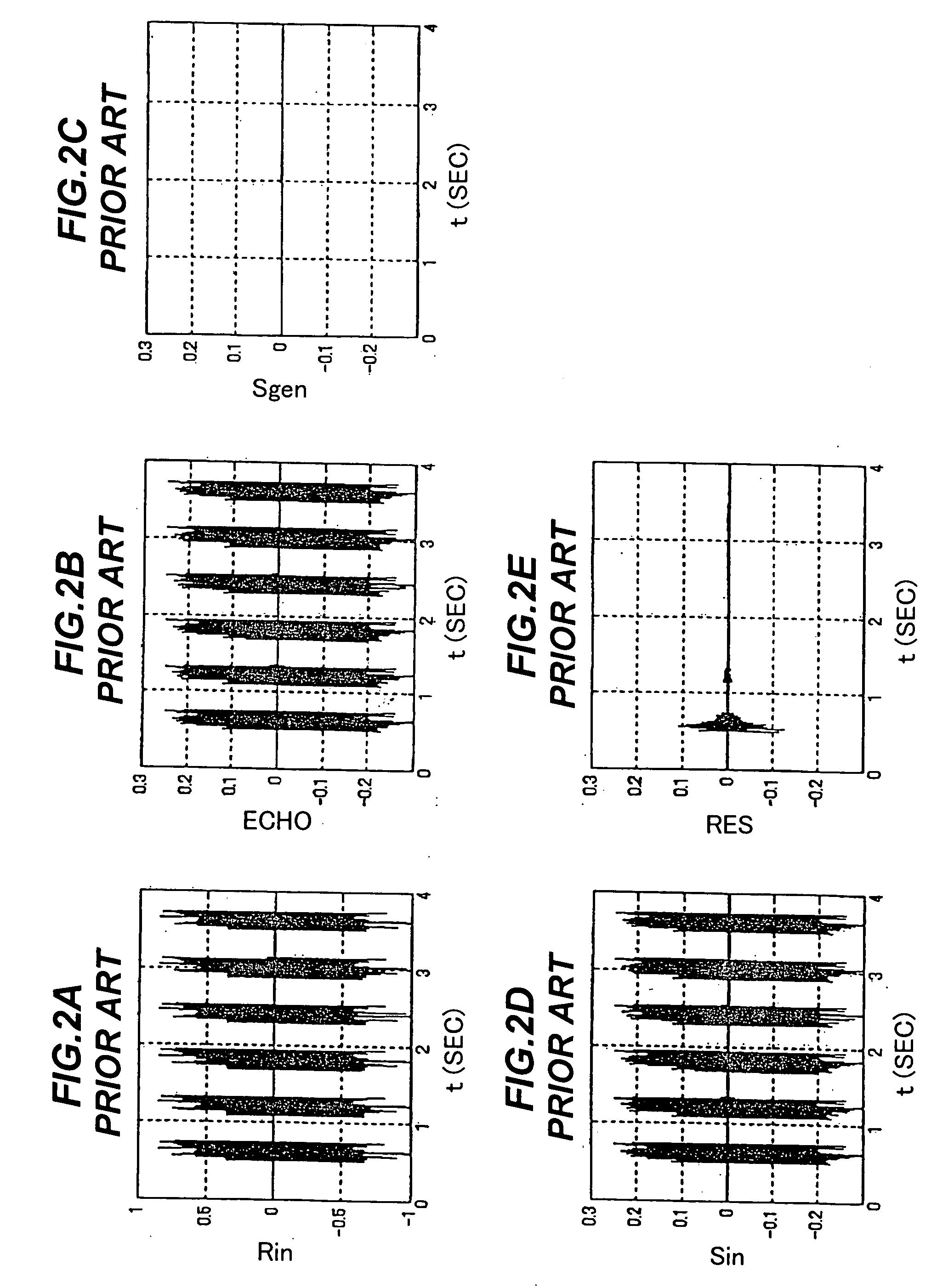Echo canceler and echo canceling method
a canceler and echo technology, applied in the field of echo cancelers and echo canceling methods, can solve the problems of reducing the speed of convergence in an environment with little background noise, affecting the performance of echo cancelers, and affecting the accuracy of echo replica signals, etc., to achieve faster convergence of filter coefficients and step sizes.
- Summary
- Abstract
- Description
- Claims
- Application Information
AI Technical Summary
Benefits of technology
Problems solved by technology
Method used
Image
Examples
first embodiment
[0058]Referring to FIG. 6, the echo canceler 100 in the first embodiment comprises at least an adaptive filter 11, a subtractor 12, a double-talk detector 13, a background noise estimator 110, a power calculator 140, and a step size calculator 150. This echo canceler 100 is obtained by adding the background noise estimator 110 to the conventional echo canceler shown in FIG. 1, replacing the squared norm calculator with the power calculator 140, and altering the operation of the step size calculator.
[0059]The adaptive filter 11 receives a step size μ from the step size calculator 150, performs the calculations in the modified normalized LMS coefficient updating formula given in the background, using the received step size μ, to update the filter coefficients, calculates the echo replica signal y(n) by the formula given in the background, and supplies the echo replica signal y(n) to the subtrahend input terminal of the subtractor 12.
[0060]The subtractor 12 subtracts the echo replica s...
second embodiment
[0092]The echo canceler and echo canceling method in the second embodiment of the invention will now be described with reference to the drawings.
[0093]The echo canceler according to the second embodiment is obtained from the echo canceler 100 according to the first embodiment in FIG. 6 by replacing the background noise estimator 110 shown in FIG. 7 with the background noise estimator 210 shown in FIG. 13.
[0094]The internal structure of the background noise estimator 210 in FIG. 13 will be described below. The other parts are the same as in FIG. 6.
[0095]Referring to FIG. 13, the background noise estimator 210 comprises an amplitude limiter 217, a multiplier 111, and an averager 112. As in the first embodiment, the averager 112 is, for example, an infinite impulse response (IIR) low pass filter (LPF) including multipliers 113, 116, an adder 114, and a delay element 115.
[0096]The amplitude limiter 217 pre-processes the residual error signal RES before it is squared, by limiting the amp...
PUM
 Login to View More
Login to View More Abstract
Description
Claims
Application Information
 Login to View More
Login to View More - R&D
- Intellectual Property
- Life Sciences
- Materials
- Tech Scout
- Unparalleled Data Quality
- Higher Quality Content
- 60% Fewer Hallucinations
Browse by: Latest US Patents, China's latest patents, Technical Efficacy Thesaurus, Application Domain, Technology Topic, Popular Technical Reports.
© 2025 PatSnap. All rights reserved.Legal|Privacy policy|Modern Slavery Act Transparency Statement|Sitemap|About US| Contact US: help@patsnap.com



